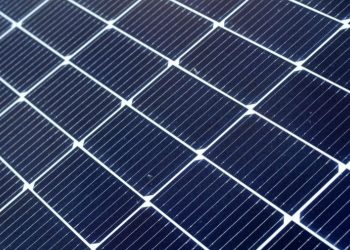The government package includes two rounds that will fund residential solar and storage projects, followed by resilience solutions such as microgrids, community solar and grid modernization.
This week the U.S. Department of Energy’s Grid Deployment Office released a Request for Information (RFI) to gather feedback from stakeholders in Puerto Rico on how to allocate $1 billion managed through the Puerto Rico Energy Resilience Fund (PR-ERF).
After recent hurricanes and decades of underinvestment in the island’s electric grid, the new funding will be developed to increase energy resilience and reduce the energy burden on the Caribbean island’s vulnerable residents. The U.S. investment also aligns with Puerto Rico’s public energy policy to achieve 100% renewable energy by 2050 as well as the Biden Administration’s commitment to improving the island’s energy system.
After Hurricane Fiona, in October 2022 President Joseph Biden visited the island and committed to leveraging the technical support of Federal agencies to support improvements to Puerto Rico’s electric grid. Then in December, Biden signed the 2023 Consolidated Appropriations Act into law, which includes $1 billion for the PR-ERF funding to drive key investments in renewable and resilient energy infrastructure in Puerto Rico.
The PR-ERF package will be managed by the Grid Deployment Office in consultation with the Federal Energy Management Agency (FEMA) and the Department of Housing and Urban Development (HUD).
The agency is requesting information from Puerto Rican stakeholders about both short- and long-term energy solutions including residential rooftop solar deployment, community and critical service energy resilience, non-profit partnerships, and workforce training to sustain the island’s clean energy economy.
The PR-ERF calls for at least two rounds of funding:
- The first round will rapidly deploy residential rooftop solar and energy storage for vulnerable households and households that include individuals with disabilities.
- The subsequent round of investments may include energy resilience solutions like community solar, microgrids, and other grid modernization solutions as well as potential partnerships with local groups and workforce training.
To read more about PR-ERF click here.
“For far too long, Puerto Ricans have endured an unreliable and expensive electric system with frequent blackouts due to catastrophic weather events and aging infrastructure,” said Agustín Carbó, Director of the Puerto Rico Grid Modernization and Recovery Team. “This historic investment will be transformative for many Puerto Rican families, keeping the lights on through power outages, providing peace of mind during hurricane season, and saving them more money and reducing high electric bills with these clean energy solutions.”
Feedback for the PR-ERF process, including identifying priority energy technologies and solutions, eligibility, funding structure, and timing, can be provided to government stakeholders by April 21 at 5 p.m. ET by emailing: PuertoRicoGDO@hq.doe.gov. Initial funding from the program is expected to be administered by the end of 2023.
Earlier this year six U.S. national laboratories described how Puerto Rico could reach 40% renewable energy generation by 2025, as mandated by Puerto Rico’s Act 17. The U.S. territory could reach 36% renewables by 2025 if 3.75 GW of utility-scale solar and 1.5 GW of storage that Puerto Rico has mandated utility authority PREPA to procure were constructed and interconnected by year-end 2025, which would be “very rapid deployment,” the national laboratories said in a report.
Delays at multiple stages have slowed six tranches of planned renewables procurements that the Puerto Rico Energy Bureau mandated PREPA to undertake in an August 2020 order. While the Energy Bureau ordered requests for proposals for the first five procurements by year-end 2022, only two RFPs have been issued so far to PREPA.
Although Puerto Rico’s Act 17 mandated that PREPA reach 20% renewables by 2022, renewables provided 3% of generation in 2022, said Marisol Bonnet, team lead for the U.S. Department of Energy’s Puerto Rico Energy Recovery Team, during a webinar describing the report by the six national laboratories.
P.J. Wilson, president of the Solar and Energy Storage Association of Puerto Rico, whose group the Solar and Energy Storage Association of Puerto Rico is a participant in the “PR100” initiative that produced the report, said the initiative is a “space for all stakeholders to join minds to define the technical pathways” for Puerto Rico to reach 100% renewable electricity by 2050—the final mandate of Puerto Rico’s Act 17. The PR100 process, he said, also “encourages federal funding to align with Puerto Rico energy policy, local resilience needs and industry best practices.”
This content is protected by copyright and may not be reused. If you want to cooperate with us and would like to reuse some of our content, please contact: editors@pv-magazine.com.


















